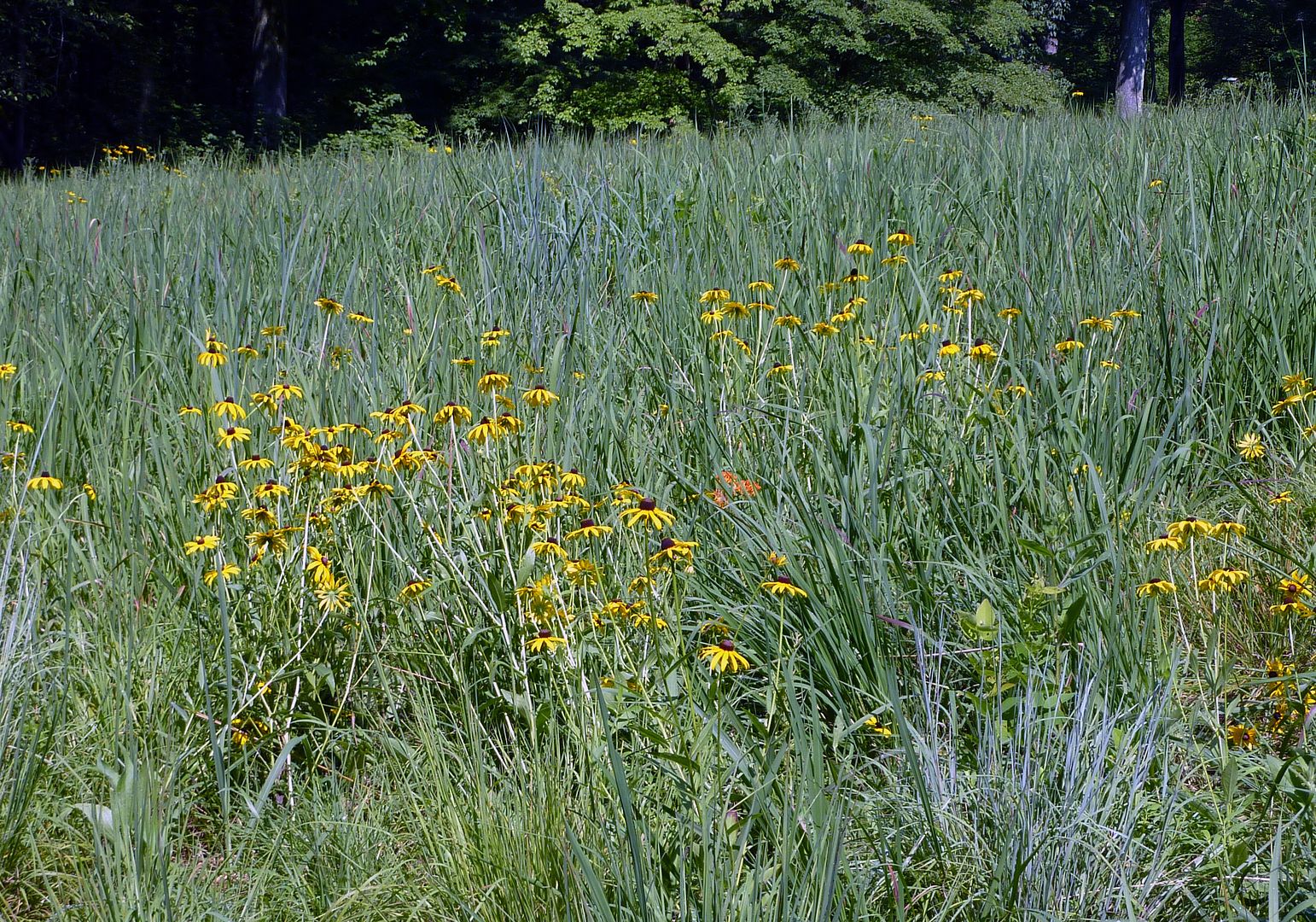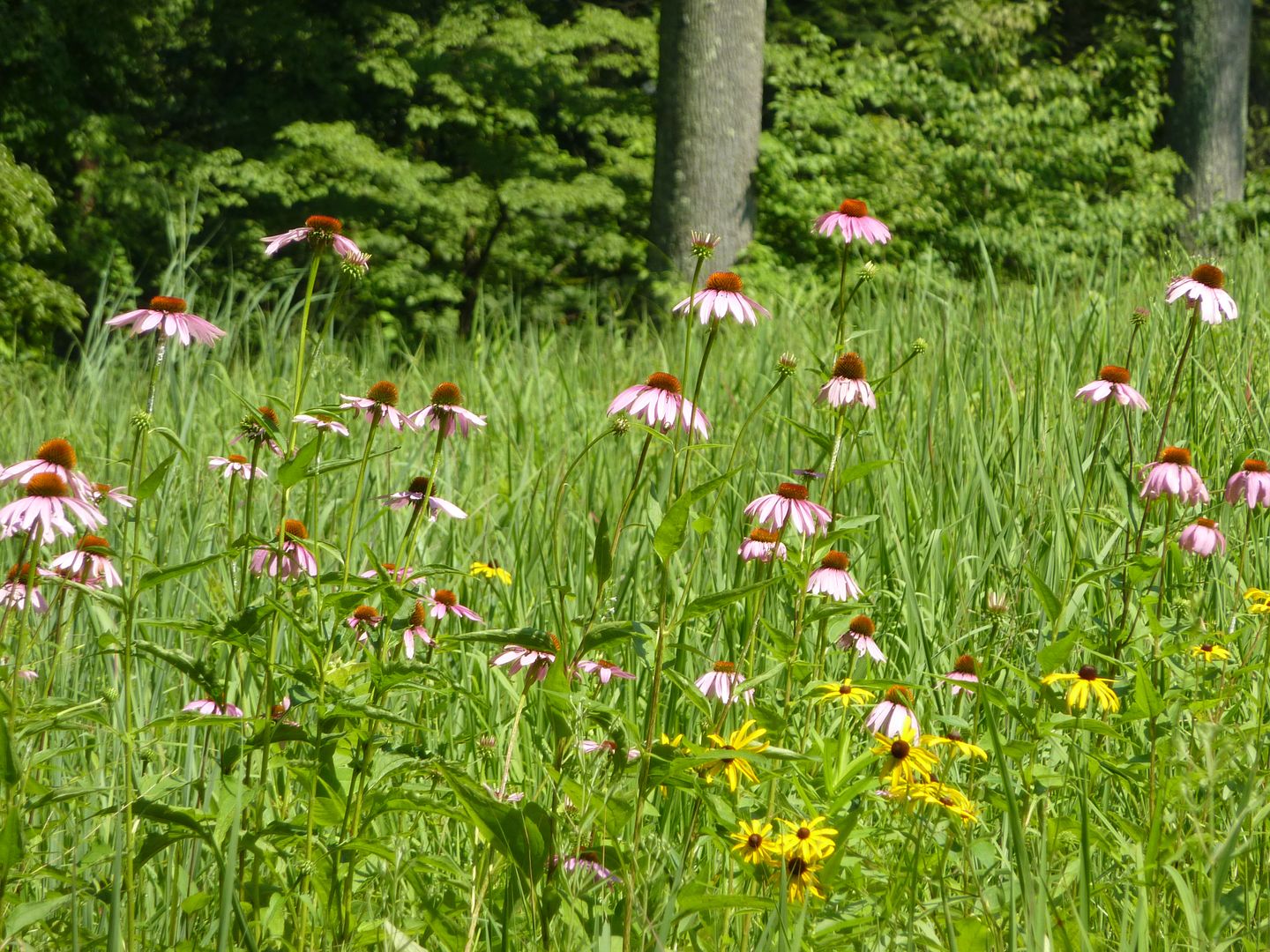After reading books like The Ecology and Management of Prairies in the Central United States (Bur Oak Book)
Basically a healthy meadow consists of 150 to 300 plant species. The Mt. Cuba Center seems to run their meadow differently. I think it's correct to say they're trying to maintain a specific look rather than allowing it to go through a natural succession. Other than removing trees now and again I'd say they don't allow their plant species to change over time.
By design they favor grass species over forbs. Here you can see an abundance of Little Bluestem, Schizachyrium scoparium, which is a grass that ranges from blue-green to green in color. There were lots of other grass species present but only 4 or so were highlighted. To some people this might look boring but grasses really don't shine in the meadow until the autumn and winter. There is something so majestic and calming about watching a field of tall grasses sweep with the wind. When the sight takes up your entire field of vision there's nothing quite like being there in person. It really is something you have to see in person to appreciate; cameras do not capture the effect at all.
To comment on the tone of the course a little I noticed there was almost no talk of succession. The instructor mentions the Rudbeckia hirta, Black-eyed Susan, will reseed itself around but they didn't mention why. Again this leads me to believe they're more interested in maintaining a certain look as opposed to being a course on prairie preservation. There is a follow up course I'm attending next month so I might be wrong about this.
In truth things like Black-eyed Susan have seeds that germinate when in the sun. Thus they are a pioneer species. If a tree falls in the woods, their seeds will germinate. If there's lots of sun hitting the ground, their seeds will germinate. However, several years later this is unlikely the case. All the grasses and forbs in a meadow die back to the ground each year leaving lots of dead stems. Slowly but surely this abundance of organic matter shades out the seeds or prevents them from touching the soil. They're slowly replaced by things like Echinacea purpurea, Purple Coneflower, which are more perennial.
There was a discussion on installation of a meadow and some good pointers given by the instructor but this was only after someone asked about it. Not planting plugs to warm season grasses in the fall was among the smarter things mentioned. As these species only grow when the soil is warm they won't do anything in the fall or winter and typically die as a result.
I look forward to the second course next month. Again, I showed up 10 minutes late so there could be a whole discussion I missed. For a good read, if not a little boring though I recommend The Ecology and Management of Prairies in the Central United States (Bur Oak Book)

